Ski: 2021-2022 Wagner Summit 106, 186 cm
Test Location: Mt. Crested Butte, Colorado
Days Skied: 8
Available Lengths: 172, 179, 186 cm (custom options available)
Blister’s Measured Tip-to-Tail Length (straight-tape pull): 184.4 cm
Blister’s Measured Weight per Ski: 2008 & 2065 grams
Stated Dimensions: 141-106-127 mm
Blister’s Measured Dimensions: 140.9-105.1-126.9 mm
Stated Sidecut Radius (186 cm): 19.9 meters
Measured Tip & Tail Splay (ski decambered): 72 mm / 31.5 mm
Measured Traditional Camber Underfoot: 1.5 mm
Core: aspen + “carbon fiber torsion box” + fiberglass laminate (custom options available)
Base: sintered “extra thick” P-tex
Factory Recommended Mount Point: -10.6 cm from center; 81.6 cm from tail
Boots / Bindings: Tecnica Mach1 130 MV, Head Raptor 140 RS / Marker Griffon

Intro
This February at our inaugural Blister Summit, one of the participating brands was Wagner Custom Skis.
Typically, Wagner only makes fully custom skis — you’d work with them to tweak everything from the shape to the construction, rocker profile, flex pattern, graphics, and more.
But for the Summit, Wagner made several different skis spanning a few waist widths to let participants try out some of their different types of builds.
A few of us at Blister also ended up spending time on several Wagner skis before, during, and after the Summit. One of those skis is the one we’re talking about here: a 106mm-wide model that’s designed to be light enough for days of human-powered days in the backcountry, but stable enough to hold up to days lapping the resort.
Several of us were quite impressed by this ski (which Wagner is calling the “Summit 106” and is now available to buy from them), so let’s dive in:
Construction
This Wagner Summit 106 is made with an aspen wood core that’s wrapped in what Wagner calls their “Carbon Fiber Torsion Box.” Essentially this consists of numerous carbon stringers that are wrapped around the wood core in a criss-cross pattern, and the intention is to add torsional rigidity to the skis without much weight gain. This ski was finished off with a 22-oz fiberglass laminate, Wagner’s “extra thick” sintered base material, and one of their stock top sheets (you can pick from a wide variety of their top sheets, wood veneers, or use your own graphic).
For their custom skis, Wagner offers a wide range of construction options, with lots of different wood cores, the option of titanal layers, “viscoelastic carbon fiber,” Aramid impact-resistant layers, alternative base materials, different fiberglass layups, and more.
In 2021, Wagner started sourcing their aspen wood cores from the trees that were downed during Colorado’s historic 2019 avalanche cycle. I still have a very clear memory of the destruction that occurred during those early weeks of March, and you can still see the debris scattered throughout pretty much every mountain range in the state. It’s cool that Wagner is managing to make use of some of the trees that were casualties of those massive slides, and they made a video explaining the background and execution of the project:
Shape / Rocker Profile
There’s nothing weird or eyebrow-raising about the shape of the Wagner Summit 106. It has pretty subtle tip and tail taper and, overall, it looks a bit like a Blizzard Cochise 106, just with wider tips and tails relative to its waist (i.e., it has a bit more sidecut). Its shape also looks somewhat similar to the 4FRNT MSP 107, Liberty Origin 106, and Blizzard Rustler 10.
The rocker profile on the Wagner 106 we’ve been reviewing is nothing wildly out of the ordinary for a 106mm-wide ski, but personally, I really like it. It has what I’d call “moderately deep” tip and tail rocker lines, but they’re quite low-slung until the very ends of the ski (particularly the tip rocker line). The Wagner 106’s rocker profile is again fairly similar to the Blizzard Cochise 106, and also the Line Sick Day 104.
And again, if you were making a ski with Wagner, you could customize both its shape and rocker profile to your liking, but as you’re going to see soon, we aren’t going to be encouraging people to mess much with the shape of this particular ski.
Flex Pattern
Here’s how we’d characterize the flex pattern of the Wagner 106:
Tips: 6
Shovels: 6-6.5
In Front of Toe Piece: 7-9.5
Underfoot: 10
Behind the Heel Piece: 9.5-8
Tails: 7.5-6
While Wagner could make just about any flex pattern you want, the flex pattern of the 106 we have is pretty moderate. It has fairly soft tips and shovels and it slowly and smoothly stiffens up as you move to the middle of the ski. The back-half of the ski is a bit stiffer overall than the front, but it finishes with a tail that feels pretty similar to the tips.
This flex pattern is pretty similar to the Line Sick Day 104 and Liberty Origin 106, and notably softer than some other options in this weight class, such as the Head Kore 105.
Mount Point
The Wagner 106’s recommended mount point on our pair is about -10.5 cm back from the true center of the ski. Again, you could tweak the mount point on your ski, but this is a pretty traditional mount point. That said, I also spent time on this ski with the bindings mounted +2 cm from that line (about -8.5 cm from true center) and discuss that below in our Full Review.
Weight
For a ski that’s designed with both backcountry and resort skiing in mind, the Wagner Summit 106’s weight is very much in line with several other skis we like for that use.
At about 2036 grams per ski for the 186 cm length, weight-wise, this Wagner 106 is quite similar to skis like the Head Kore 105, Liberty Origin 106, Moment Wildcat 108, and DPS Koala F103. This Wagner 106 is a bit heavier than some of the lighter options in the “50/50” category, such as the Atomic Bent Chetler 100 and Line Sick Day 104, but it’s still notably lighter than many inbounds-oriented alternatives.
For reference, here are a number of our measured weights (per ski in grams) for some notable skis. Keep in mind the length differences to try to keep things apples-to-apples.
1787 & 1793 Fauna Pioneer, 184 cm (19/20–20/21)
1800 & 1824 Luke Koppa’s ROMP 100, 183 cm
1806 & 1862 Armada Tracer 108, 180 cm (19/20–20/21)
1807 & 1840 Atomic Bent Chetler 100, 188 cm (18/19–21/22)
1848 & 1903 Line Sick Day 104, 186 cm (17/18–21/22)
1875 & 1881 Line Sir Francis Bacon, 184 cm (19/20–21/22)
1883 & 1898 Rossignol BLACKOPS Sender, 178 cm (20/21–21/22)
1896 & 1942 K2 Reckoner 102, 184 cm (20/21–21/22)
1947 & 2011 4FRNT Devastator, 186 cm (20/21)
1973 & 1997 Volkl Revolt 104, 188 cm (20/21–21/22)
1976 & 2028 Parlor Cardinal Pro, 182 cm (19/20–20/21)
1985 & 2006 Parlor Cardinal 100, 185 cm (16/17–20/21)
1999 & 2020 Rossignol BLACKOPS Sender Ti, 180 cm (20/21–21/22)
2005 & 2035 Liberty Origin 106, 187 cm (19/20–20/21)
2006 & 2065 Head Kore 105, 189 cm (19/20–20/21)
2008 & 2065 Wagner 106, 186 cm (20/21–21/22)
2011 & 2028 Moment Wildcat 108, 184 cm (19/20–20/21)
2022 & 2046 DPS Foundation Koala 103, 184 cm (21/22)
2046 & 2120 Black Crows Corvus, 188 cm (18/19–20/21)
2049 & 2053 Whitedot Altum 104, 187 cm (19/20–20/21)
2073 & 2074 Season Nexus, 183 cm (20/21)
2079 & 2105 Kastle FX106 HP, 184 cm (19/20–20/21)
2096 & 2100 Salomon QST 106, 181 cm (19/20–21/22)
2097 & 2113 DPS Alchemist Wailer 106 C2, 189 cm (19/20–20/21)
2101 & 2104 Fischer Ranger 102 FR, 184 cm (18/19–21/22)
2110 & 2119 Moment Wildcat 108, 190 cm (19/20–20/21)
2113 & 2121 Moment Meridian, 187 cm (16/17–20/21)
2111 & 2125 J Skis Vacation, 186 cm (18/19–20/21)
2112 & 2125 4FRNT MSP 107, 187 cm (18/19–20/21)
2116 & 2181 Faction Dictator 3.0, 188 cm (19/20–21/22)
2120 & 2134 Blizzard Rustler 10, 188 cm (19/20–21/22)
2145 & 2167 Sego Big Horn 106, 187 cm (20/21)
2153 & 2184 Rossignol BLACKOPS Sender Ti, 187 cm (20/21–21/22)
2165 & 2211 K2 Mindbender 108Ti, 186 cm (19/20–21/22)
2165 & 2219 Icelantic Nomad 105, 191 cm (19/20–20/21)
2170 & 2180 Dynastar M-Free 108, 182 cm (20/21–21/22)
2202 & 2209 Shaggy’s Ahmeek 105, 186 cm (19/20–20/21)
2218 & 2244 Volkl Mantra 102, 184 cm (19/20–20/21)
2232 & 2242 Blizzard Cochise 106, 185 cm (20/21–21/22)
2232 & 2244 ON3P Woodsman 108, 187 cm (19/20)
2233 & 2255 Nordica Enforcer 104 Free, 186 cm (19/20–21/22)
2241 & 2295 4FRNT Devastator, 184 cm (14/15–18/19)
2283 & 2290 ON3P Wrenegade 108, 189 cm (18/19–19/20)
2295 & 2344 J Skis Hotshot, 183 cm (20/21)
2312 & 2386 Prior Husume, 188 cm (17/18–20/21)
2321 & 2335 Fischer Ranger 107 Ti, 189 cm (19/20–21/22)
2325 & 2352 Folsom Blister Pro 104, 186 cm (19/20)
2326 & 2336 Nordica Enforcer 100, 186 cm (20/21–21/22)
2353 & 2360 Volkl Katana 108, 184 cm (20/21–21/22)
2449 & 2493 J Skis Hotshot, 189 cm (20/21)
Alright, now onto how this ski performs on snow:
FULL REVIEW
We’ve now had the Wagner Summit 106 in a pretty broad range of conditions and terrain at Mt. Crested Butte. We’ve skied it in slush, scraped-off icy patches, fairly deep pow, and nice chalk. While reviewing skis from a custom ski manufacturer is a bit different (you won’t find this particular ski in any store), all of us who’ve been on it have been really impressed by the execution on this 50/50 all-mountain ski. So let’s get into why:
Soft Chop & Powder
Luke Koppa (5’8”, 155 lbs / 173 cm, 70 kg): I probably sound like a broken record at this point if you’ve read a lot of our reviews, but man do I love soft chop. And for fairly lightweight skis like this Wagner 106, these sort of soft, somewhat variable conditions are where it shines.
In choppy snow that hasn’t yet set-up into harsh crud, this ski is a blast. While it’s obviously not ideal for making the biggest, fastest turns in inbounds chop, I came away with the impression that it’d be plenty stable for a lot of skiers (arguably, the majority of skiers). It will get deflected if you ram it into a big pile of pushed-around snow, but it always feels very intuitive and predictable to me. And the upside to its lower weight is that it’s super easy to get airborne and play around through fields of soft, cut-up snow.
To me, the defining trait of this Wagner 106 is its blend of carving performance and maneuverability. This 106 (and frankly, all the Wagner skis we’ve been on this season) are really, really good carvers for their respective widths. But I think due to their low-slung, fairly deep rocker lines, these Wagner skis are also quite easy to release and throw sideways when needed. This not only makes the Wagner 106 fun in that you can switch up your skiing style whenever you want, but I think the ski’s strong on-edge feel also helps make it feel more stable than some similarly light skis with more dramatic tip and tail splay. But at the same time, the Wagner 106 definitely doesn’t feel locked into a turn to the point that you can’t shut it down quickly.
On that note, I really like the flex pattern of this ski, too. In soft chop, I’m always gonna end up going faster than I should, and I consequently appreciate a ski that’s easy and predictable when it comes to shedding speed. Personally, I always prefer something that will let me do that from a centered or even slightly backseat stance. I know that’s not the best technique, but if I’m quickly shedding speed, it usually means I’m a bit tired and probably not skiing at my best. Skis that just stand me up when I throw a backseat slash are scary, but the Wagner 106 is not that kind of ski. It responds best to a forward stance, but it’s pretty forgiving overall (and again, you could make it stiffer or softer than the version we tested).
All in all, the Wagner 106 is a ton of fun in soft, choppy snow — especially if you’re someone who either takes a more conservative approach in these conditions, or who skis with a light-on-your-feet style, rather than charging straight down the fall line.
As for pure powder, I didn’t ski a ton of it on this Wagner 106, but the turns I got in about 10” of fresh snow were fun and predictable. Its fairly wide, rockered tips planed just fine, and while it’s not as loose as some skis with more tail rocker, it was easy to make both a mix of carved and slashed turns through fresh snow. As far as 106mm-wide skis go, I think this Wagner 106 would be totally capable on most pow days apart from the super deep ones.
Jonathan Ellsworth (5’10”, ~175 lbs / 178 cm, 79.4 kg): If you’re a listener of our GEAR:30 podcast, you heard me say that this ski (1) actually had me thinking about a new analogy for reviewing skis, and (2) how remarkably balanced it felt. So most of my comments here are going to flesh that out a bit.
I agree with everything written above. And when Luke talks about how well this ski carves and also how easy and intuitive it is to pivot the ski and get its tails to release, it is very hard for me to say which of those two (somewhat antagonistic / opposite / contradictory) features the ski is actually better at. The vast majority of skis we review will clearly be better at carving or at pivoting. But I can’t clearly say which this Wagner 106 is better at, because it does both so well — especially for a ski of this width and weight. Anyway, we’ll talk more about this ski’s carving performance in the next section, so lemme get back to soft chop for a minute here.
This ski isn’t heavy enough to be a bulldozer in chop. But it is so easy to adopt a more upright style when skiing chop and pop and play through the cut-up snow; it makes soft chop really fun. And unlike some other skis of about this weight, I didn’t find this Wagner 106 wanting to deflect all the time — i.e., I didn’t have to focus on or work to keep the ski tracking straight through softer, cut-up snow.
Groomers
Luke: As I alluded to above, the Wagner 106 carves really, really well for its width. On consistent groomers that weren’t really scraped-off or filled with piles of pushed-around snow (e.g., early morning laps on Forest Queen at Mt. Crested Butte), I could lean into and lay over this ski as hard as I wanted. It produces a nice amount of pop coming out of a hard carve, it’s quick to initiate turns, and it’s not very difficult to bend.
On piste, the Wagner 106 kind of reminded me of a slightly softer, lighter Fischer Ranger 102 FR (another one of my favorite carvers in this width).
On end-of-day groomers with a mix of scraped-off icy spots and softer piles of snow, this Wagner 106 is still a lot of fun and very predictable, but I just have to think a bit more about carving right into a mound of loose snow than I would on a much heavier ski. This ski obviously doesn’t blow through those piles as well as a heavier alternative, but I also never once thought this Wagner 106 felt unpredictable or scary on any sort of groomer.
With a stated sidecut radius of 19.9 meters for the 186 cm length we’ve been skiing, this ski feels very versatile in terms of turn shapes — happy to make big, drawn-out arcs at mellow edge angles, or carve extremely hard across the fall line and make tight, nearly Slalom-esque turns. It was fun when I was lapping green and blue runs (e.g., Warming House Hill & Lower Ruby Chief) with my parents, but was still happy to push hard and make big, fast turns down a steep, sustained black run like International.
For this particular ski, I could see very aggressive or larger individuals wishing that the ski was a bit stiffer through the front of the ski, but I think the majority of folks would find its flex pattern quite nice on piste. And, of course, you could make this ski stiffer or softer if you were getting your own through Wagner.
All in all, this Wagner 106 is one of the better 105+ mm skis I’ve been on when it comes to groomer performance.
Jonathan: Yep. And first, I want to qualify what I said in the previous section about this ski’s carving performance. In case somebody out there really needs this to be said, no this 106mm-wide ski does not feel or perform like a ~75mm-wide dedicated carver.
But for a ski of this width, its carving performance is really beautiful on everything from pretty firm groomers to sloppy, warm, slushy groomers. On scraped-off ice, I am going to want a heavier ski with almost no tip and tail rocker (and this is why the now-deceased Head Monster 108 is still the best ski I’ve ever been on for carving ice).
But keep in mind that Wagner is positioning this as a “50/50” ski — i.e., a ski that is going to feel comfortable across a huge range of conditions and terrain, inbounds and in the backcountry. And for a ski that is setting out to be not-out-of-place anywhere? In that context, this ski is an incredible carver. And among dedicated inbounds skis of a similar width, it’s poppy, smooth, energetic, and affords good stability for its weight.
Firm Chop / Crud
Luke: These sort of rough, variable, firmer conditions are where lighter skis always fall a bit short compared to heavier alternatives, but the Wagner 106 is by no means unusually unstable in cruddy conditions when compared to similarly lightweight skis. In fact, I’d say it’s a bit better than average when it comes to its suspension and overall stability in variable conditions.
If we’re talking about rock-hard, refrozen conditions (like you might find on Mt. Crested Butte’s Banana in the morning after a warm prior day), this Wagner 106 definitely requires a pretty slow, controlled approach.
But if we’re talking about snow that’s a bit firmer than fresh soft chop, but that you can still sort of cut through, this lightweight ski was actually still a lot of fun for me. We see those latter conditions pretty often on the terrain off Crested Butte’s North Face T-bar, and this Wagner 106 handled them quite well. Yes, it certainly gets knocked around more and doesn’t feel as smooth as skis that weigh a couple hundred grams more, but it’s very predictable.
The Wagner 106’s blend of maneuverability and precision, and its supportive-yet-forgiving flex pattern are also a big help here. Personally, if I’m going to be on a light ski, I don’t want it to be super stiff or difficult to release from a turn. The Wagner 106 checks those boxes, making for a ski that can be pushed quite hard for how light it is, but that’s still easy to reign back into control when you get going too fast, or to just ski in a more casual manner when conditions aren’t ideal.
Jonathan: Since I’ve been banging the “light skis should not also be really stiff skis” drum for a long time, I definitely agree with Luke here. The rougher or firmer the off-piste crud gets, the more I want my light-ish ski to feel “supportive-yet-forgiving,” to quote Luke. And this ski does that. And the low-speed maneuverability of this Wagner 106 is really good. So when you get surprised by some fairly terrible conditions on a given run and you wish to carefully pick your way through the mess, this ski makes it all easy to navigate.
Moguls, Trees, & Tight Terrain
Luke: Overall, this Wagner 106 is a very agile, maneuverable ski, and one that I got along quite well with in tight spots.
The only area I found the Wagner 106 to be a bit challenging was in very odd, big, tight mogul lines where there weren’t any clear lines down the fall line. There, where I’m making a bunch of abrupt and last-second adjustments, I occasionally felt like the tail stood me up and it took a turn or two to get back into control.
But in more typical, nicer moguls (e.g., those under Mt. Crested Butte’s Paradise Lift, or in Hawk’s Nest), I really liked this ski. If I stay even slightly forward, the ski’s tails are easy to release and it feels like it has a pretty big sweet spot. And I think thanks to its rocker profile, this ski is happy to accommodate a variety of skiing styles in bumps. It could quickly slash through the troughs of more spaced-out bumps, carve through those same lines, or just pivot along the tops of the moguls. It also has a very low swing weight, which makes it easy to make quick adjustments or gap a bump or two.
Personally, if I were to own this ski, I think I’d make the flex pattern a touch more symmetrical (i.e., make the area behind the bindings flex more similarly to the area in front of the bindings). But overall, this version makes for a pretty forgiving, maneuverable, and nimble ski.
Jonathan: I love this ski in moguls. Pretty much all moguls. So maybe where I disagree with Luke is that, even in big, messed-up moguls, I can’t think of … any? skis of this length and width that I’d clearly rather be on. When there are no lines, I tend to like a ski that is really easy to pop off moguls then make airplane turns to go then try to precisely land in a trough. Then just keep repeating that process. This ski feels light enough to me to do that, and still solid enough that the ski feels supportive when wrenching it into troughs.
Finally, I think I tend to like a slightly stronger tail in moguls than Luke does, and we’ll flesh some of this out in our Deep Dive Comparisons if you’re now really curious about how this Wagner 106 stacks up to some other skis in this category.
Playfulness & Mount Point
Luke: Despite its directional overall design and -10.5 cm mount point, I’d call this Wagner 106 a fairly playful ski. It has a low swing weight, it’s pretty easy to release from a carved turn, it’s energetic, and it even skis switch quite well.
I also ended up spending some days on this ski with the bindings at +2 cm from the recommended line (about -8.5 cm from true center). The ski felt pretty similar there, but just a bit more balanced and intuitive for how I prefer to ski. It allowed for a slightly more centered stance, felt a bit more balanced in the air, and I didn’t feel like I lost much (if any) general performance compared to the recommended line. I think the ski might have been a touch more stable and intuitive on piste at the recommended line, since there’s more ski to lean into, but I ended up preferring it at +2 cm from recommended.
So while you could make this ski a lot more or less playful by tweaking any design elements with Wagner, the version we tested is a pretty playful directional ski that definitely doesn’t feel one-dimensional to me.
Jonathan: Re: mount point, Luke is always quicker to push mount points more forward than I am. I do it on occasion, but for a lighter ski like this, I’ve been really happy with it on the line, and I’m not tempted to see how I might improve its performance by going forward or back. Especially when Luke says that he might have given up even a little stability. For a ski this light, I’ll almost always err on the side of slightly more stable vs. slightly more playful.
In sum, especially for those who get along with heavier, very directional, fairly one-dimensional skis of this width, I think you’ll find this ski to be “playful” enough. For those who are accustomed to more forward-mounted skis, you might want to follow Luke’s lead and push that mount point forward.
Who’s It For?
Luke: For this review, the answer to this question is less straightforward since you could change any part of this Wagner 106 and make it a very different ski.
But specifically for the version we tested, I think this Wagner 106 would be an excellent 50/50 ski that you’d use inside the resort and in the backcountry. At the same time, it could certainly work as an inbounds-only ski for those who prefer something on the lighter, more nimble side of the spectrum. Or it could serve as a dedicated backcountry ski for those who prefer something more stable, rather than super light.
Weight and end-use aside, the overall design of this Wagner 106 seems like it could work for a really wide range of skiers (even before you go about customizing anything). It responds best to a forward, directional stance, but it’s still pretty playful overall. For its weight, it can be pushed very hard, yet it’s very easy to ski at moderate speeds and in pretty tight terrain. It carves really, really well for its width, but it still floats well in fresh snow and doesn’t require much effort to slash and slarve around.
This particular ski would not be for those who are seeking a resort ski that’s great for making big, fast turns in rough conditions. But if that’s what you’re looking for, it’s worth mentioning that Wagner also had a 107mm-wide ski at the Summit that was quite similar to this 106, except the 107 had a heavier build with titanal in it, and was much smoother and more stable when skiing really fast in crud and chop.
Jonathan: I completely agree with all of this. And to me, perhaps the most surprising thing about this ski is that I personally could be just as happy putting an alpine binding on it and skiing it only inbounds, or putting a Shift binding on it — or a lighter tech binding on it — and using it as a dedicated backcountry ski. Some of you might already know that you want a lighter ski for the backcountry, and that’s fine. But there are few lighter skis out there that we’ve been on that I think would be able to hang with the downhill performance that you’d get from this ski.
And that, my friends, is the very definition of a 50/50 ski: a ski that makes you quite happy across a broad range of conditions and terrain, inbounds or out.
So for those of you who need 1 ski to do everything, or a single ski for travel? This ski plus the binding of your choice could very well be the droid you’re looking for.
Bottom Line
Luke: For this ski, Wagner said they wanted to make a versatile 50/50 ski that was fairly lightweight but still suitable for aggressive skiing in rougher inbounds conditions.
I think the resulting ski is an extremely well-executed take on that concept.
50/50 skis are always going to bring with them some compromises — they’re typically heavier than dedicated backcountry skis, and typically not as stable as dedicated resort skis. But with this ski, I think Wagner has done a very admirable job of minimizing those tradeoffs, and I could see a whole bunch of people liking this ski.
If you go to design a ski with Wagner it could be wildly different than this 106 we tested, but after spending time on it and a few other Wagner skis, I can at least say that I have a lot of confidence in their ability to design a very good ski for a certain end-use.
Deep Dive Comparisons
Become a Blister Member or Deep Dive subscriber to check out our Deep Dive comparisons of the Wagner 106 to see how it compares to the Line Sick Day 104, Elan Ripstick 106, Liberty Origin 106, Black Crows Atris, Blizzard Rustler 10, Volkl Blaze 106, Armada Tracer 108, Sego Condor 108, J Skis Slacker, 4FRNT MSP 107, Whitedot Altum 104, 4FRNT Devastator, Moment Wildcat 108, & Fischer Ranger 102 FR.

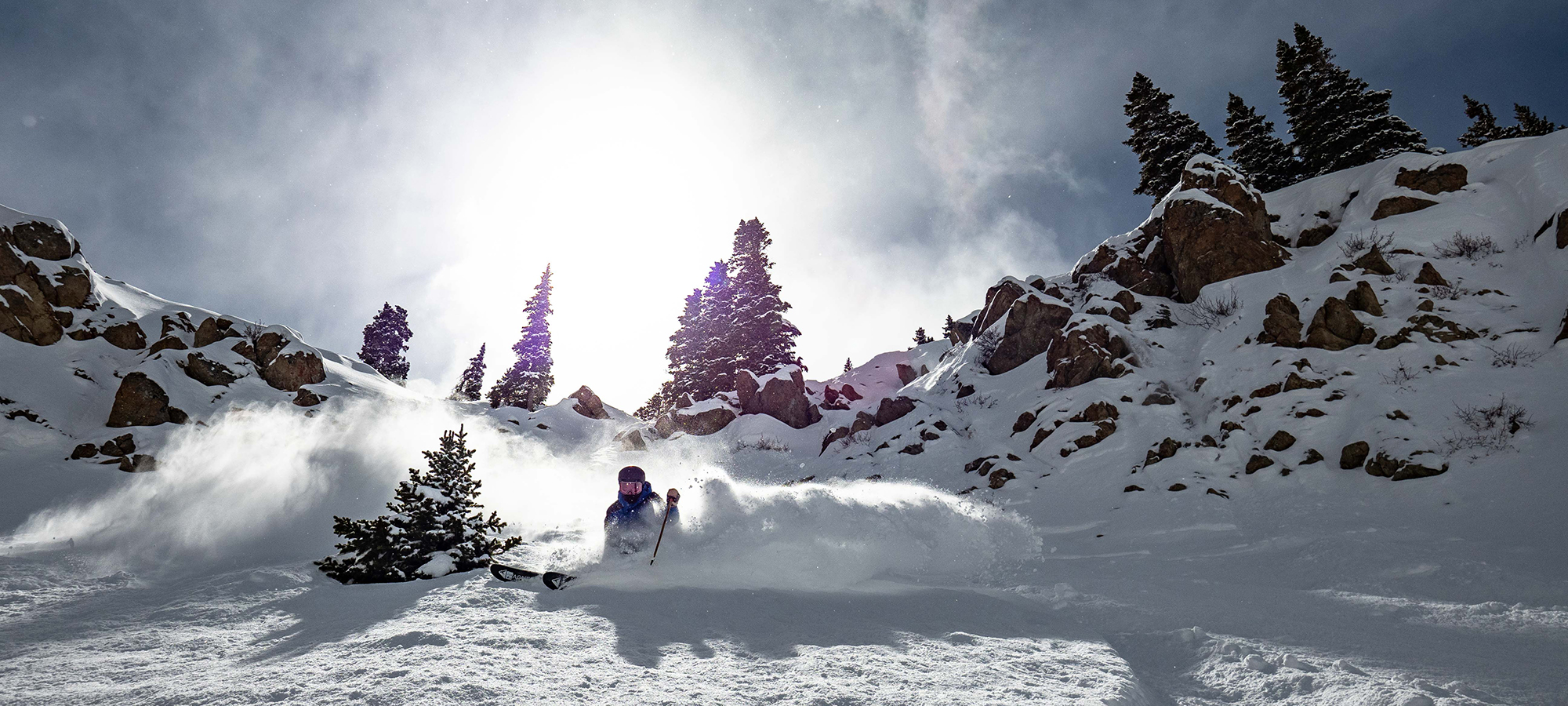


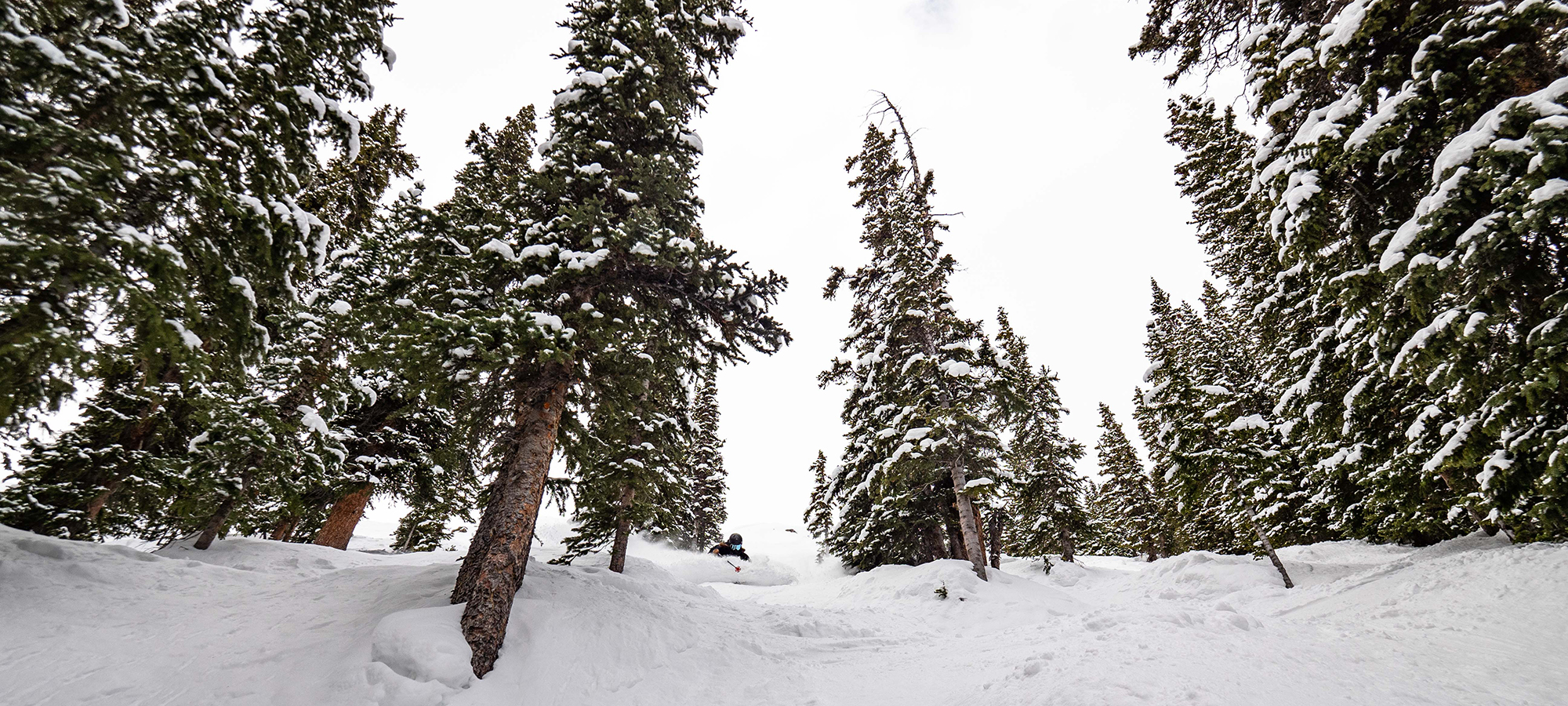
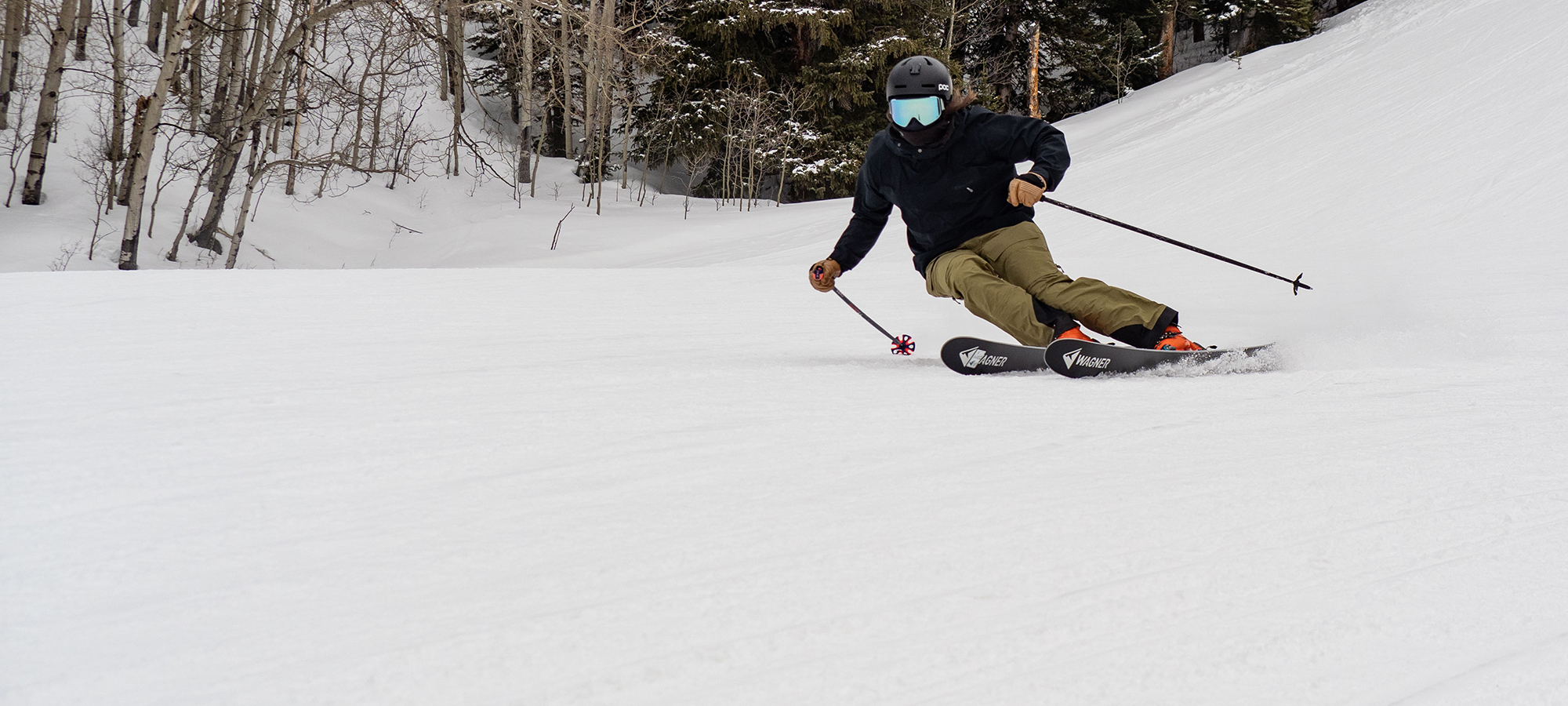
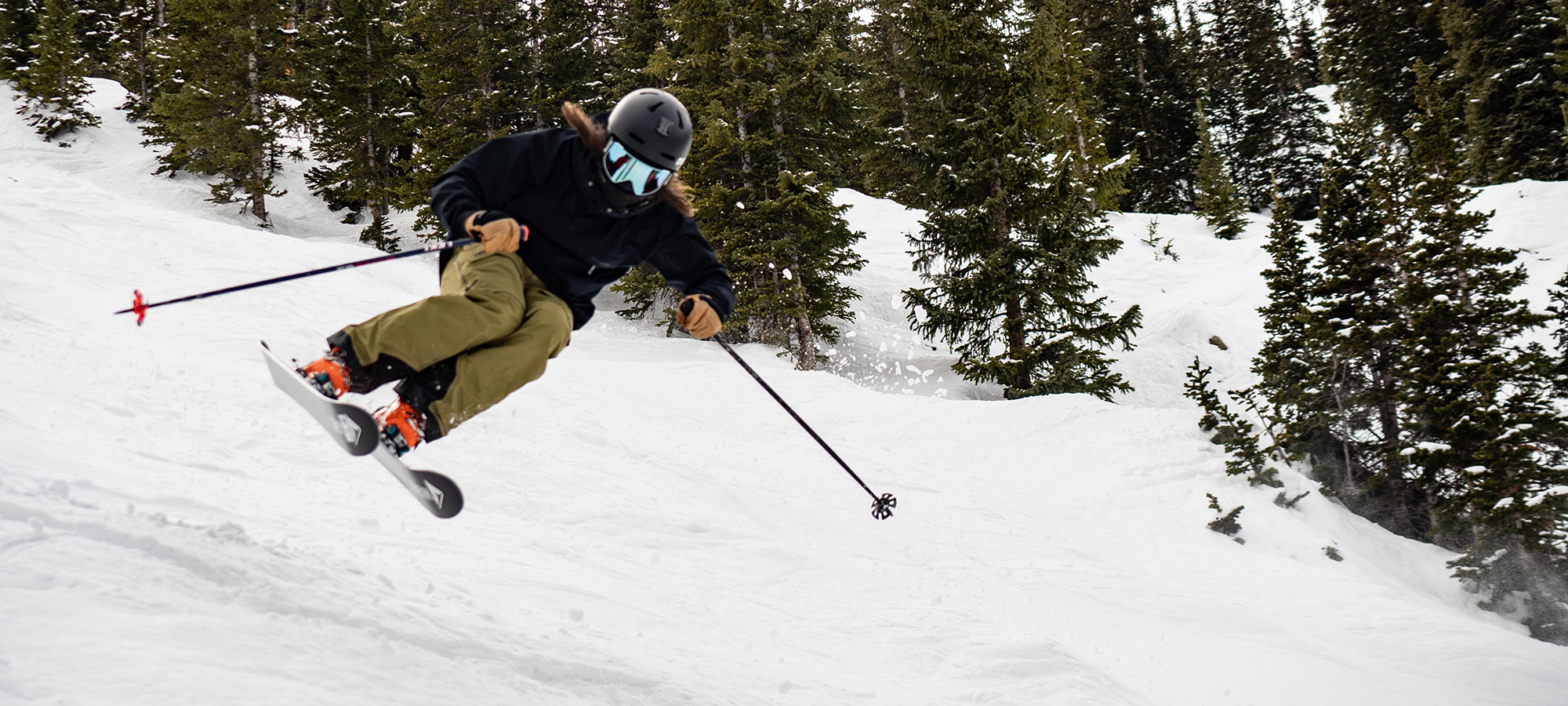
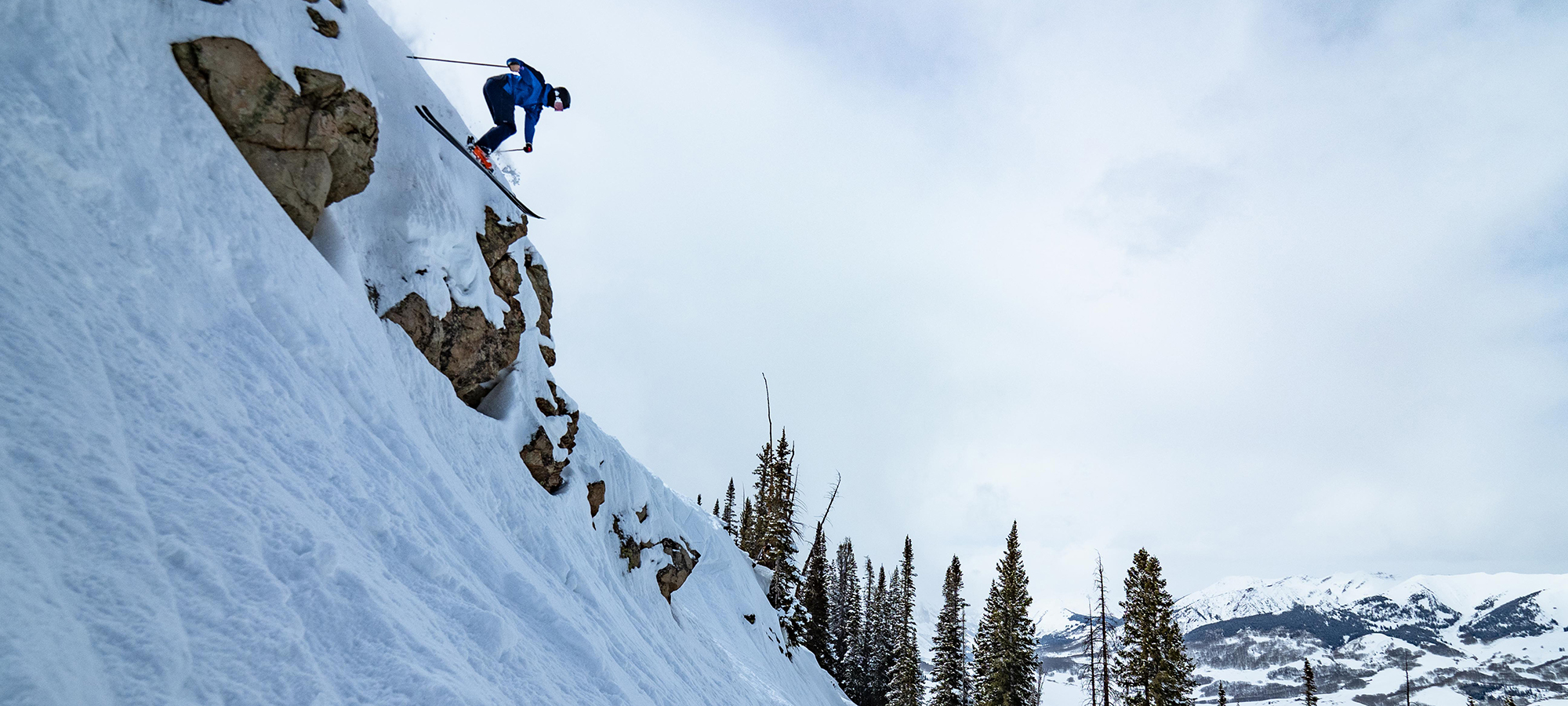
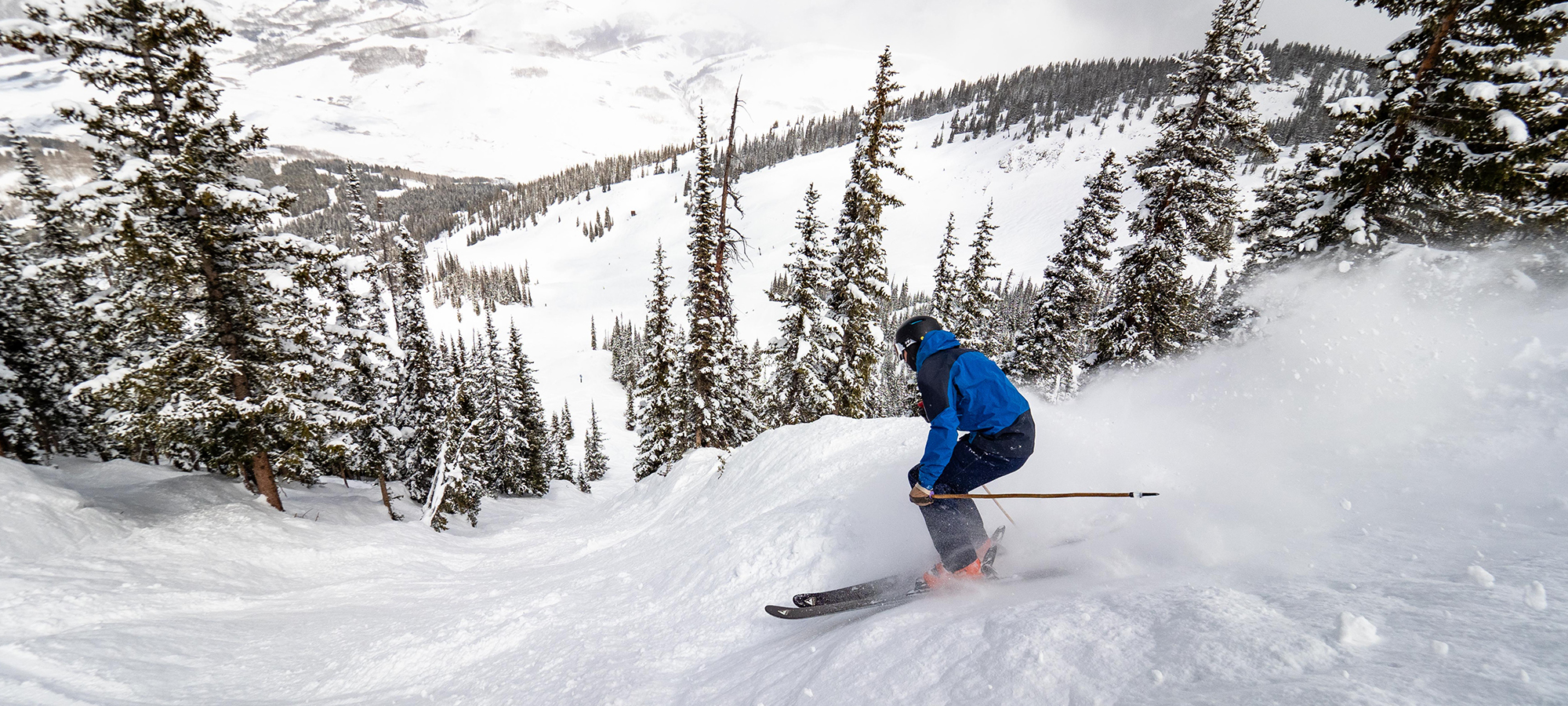
Luke – what ski DO you like for a refrozen Banana??
Probably something like a waterski that weighs 5 kilos…
Jokes aside, while no ski would make that particularly fun, I’d probably just want something that’s very heavy but also pretty loose and forgiving. The Black Ops 118 comes to mind, as does the 192 cm Dynastar M-Free 108, or the Folsom Blister Pro 104 if I’m feeling on my A-game and want something more directional.
The beef I always have with these custom places though is the cost. Like…just buy the Sick Day 104 and spend $500 to do the same thing as these that cost what? $2000? It seems like the only reason to ever go custom is if you just don’t want to be bothered figuring out what off the shelf ski does what you want to do, or you just want to tell all your country club friends how you have custom skis.